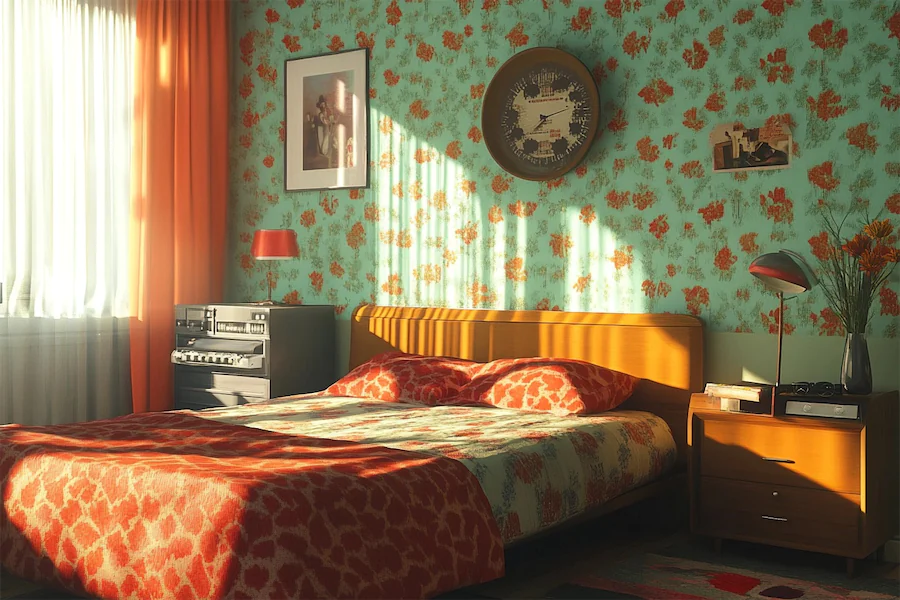A retro bedroom design captures the charm and nostalgia of past decades, blending vintage aesthetics with modern comfort to create a unique and inviting space.
Introduction to Retro Bedrooms
Retro bedrooms draw inspiration from design trends of the mid-20th century, particularly the 1950s through the 1970s. This style is characterized by bold colors, geometric patterns, and a playful mix of textures and materials, resulting in a lively and personalized atmosphere.
History and Origins of Retro Bedrooms
The retro design movement emerged as a celebration of post-war optimism, reflecting societal shifts and technological advancements. Influenced by pop culture, art, and fashion, retro interiors embraced vibrant hues, innovative materials, and futuristic forms, leaving a lasting impact on home decor.
Key Features of Retro Bedrooms
- Bold Color Schemes: Incorporate vibrant colors such as mustard yellow, avocado green, and burnt orange, often combined with neutral tones to balance the palette.
- Geometric Patterns: Utilize patterns like chevrons, polka dots, and abstract shapes in wallpapers, bedding, or rugs to add visual interest and a nostalgic touch.
- Mid-Century Furniture: Select furniture pieces with clean lines, tapered legs, and organic shapes, often crafted from teak or walnut, to anchor the retro aesthetic.
- Vintage Accessories: Incorporate period-specific decor items such as rotary phones, sunburst clocks, and retro artwork to enhance the nostalgic ambiance.
- Textural Variety: Mix materials like plastic, metal, and wood, along with fabrics such as velvet and corduroy, to create a dynamic and tactile environment.
Applications of Retro Bedroom Design
- Thematic Decor: Design a bedroom that reflects a specific decade, such as the 1960s, by focusing on the distinctive colors, patterns, and furniture styles of that era.
- Eclectic Mix: Blend retro elements with contemporary pieces to create a personalized and eclectic space that pays homage to the past while embracing modern sensibilities.
- Children’s Rooms: Incorporate playful retro themes, such as space-age motifs or vintage cartoons, to create a fun and imaginative environment for children.
Considerations When Designing a Retro Bedroom
- Cohesion: Ensure that the chosen retro elements complement each other and fit harmoniously within the overall design scheme to avoid a disjointed appearance.
- Authenticity: Incorporate genuine vintage pieces or high-quality reproductions to achieve an authentic retro look, paying attention to details like hardware and finishes.
- Functionality: Balance aesthetic appeal with practicality by selecting furniture and decor that meet modern comfort and usability standards.
Conclusion
A retro bedroom design offers a vibrant and nostalgic retreat by blending the distinctive aesthetics of past decades with contemporary comfort. By thoughtfully incorporating bold colors, geometric patterns, and vintage furnishings, you can create a space that reflects your appreciation for timeless design and personal style.
